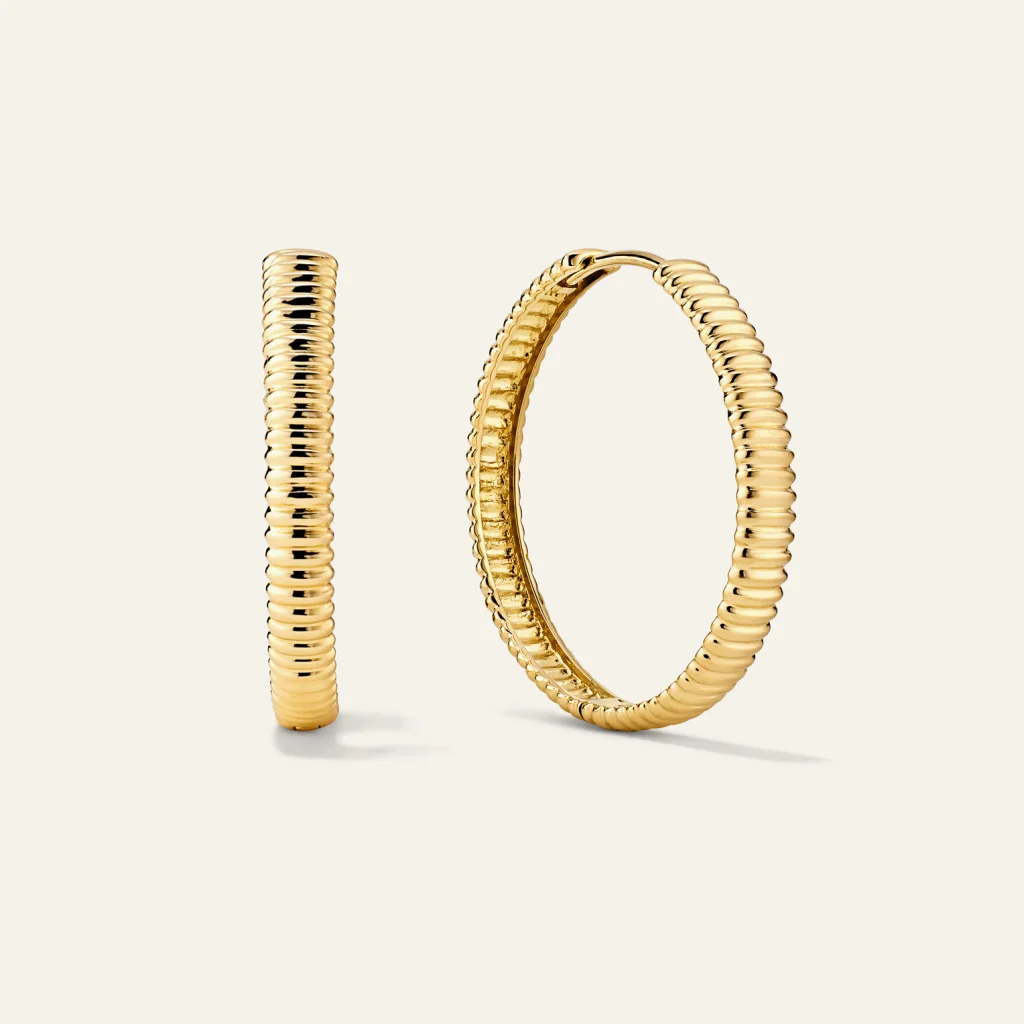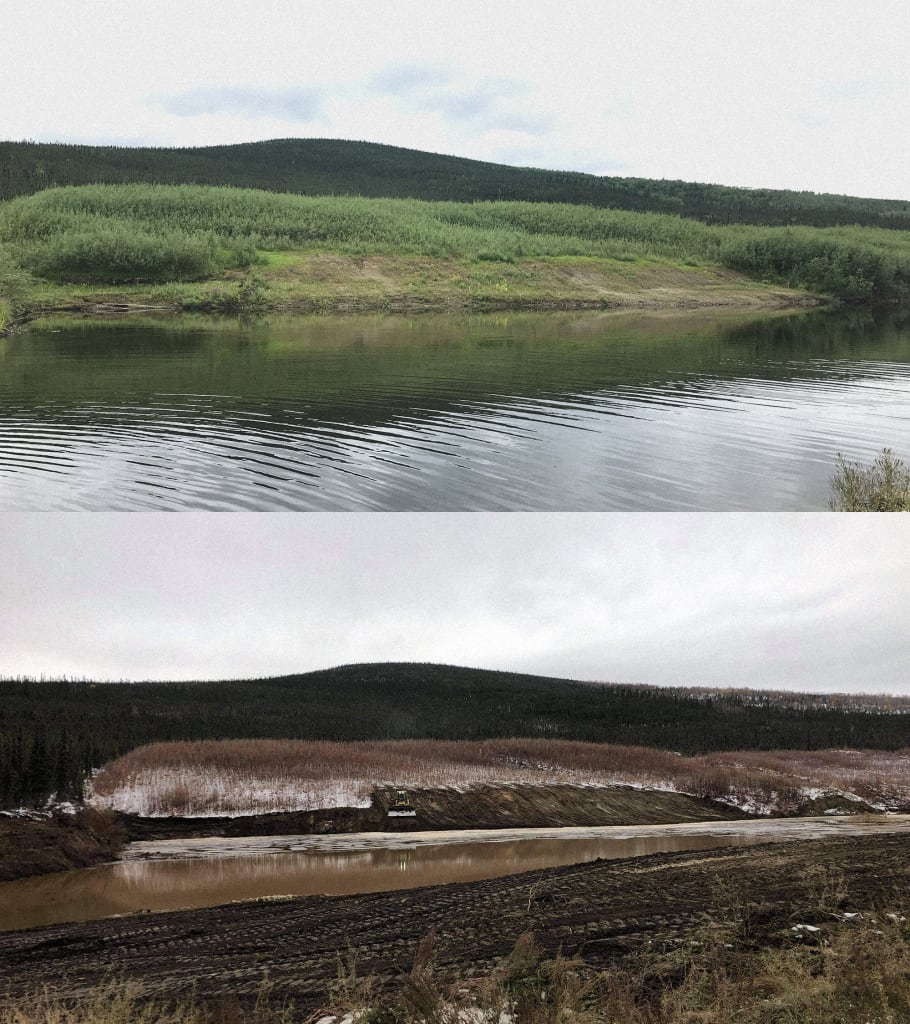Mineral mining can be a dirty business. Historically, miners dredge, dam, and sift their way through rivers and streams to collect precious minerals and metals like gold below the surface. But unlike the sparkling result that lands on fingers and is pierced through ear lobes, the remaining mining site is anything but pretty. Ecologically, it’s often hostile.
In contrast to the mining practices of yesteryear, fine jeweler Mejuri is launching a new line of jewelry that places stewardship of the environment on equal footing with good taste.
Clik here to view.

The new line of earrings is made with what the company calls “salmon gold,” which refers to the sustainable nature of the gold sourcing method. Salmon gold is sourced by extracting the last mineral remnants from the old mine tailings, or waste rock, of out-of-use, legacy placer mines near stream beds. From there, miners will close the sites and restore them to their original wildlife and fish-friendly habitats. (No, the earrings themselves aren’t rich with fatty omega 3’s.) As of 2023, 94% of the brand’s jewelry is made from recycled gold, and 6% from newly mined gold. Following this launch, the brand wants its regeneration volume to go up each year.
A sustainable jewelry alternative
The line of four “bold texture” hoop earrings are inspired by an existing collection of the brand’s “Charlotte” hoops, which is an iconic brand silhouette, according to Mejuri Chief Brand Officer Jacob Jordan. The earrings play on the classic hoop with a ridged, plissé texture, and are made of 100% 14k “salmon” gold. The hoops come in four sizes, from extra small “huggie” to large, and are lightweight, making them wearable for every day. They range in price from $198 to $598.
The launch of salmon gold follows Mejuri’s $1.5 million investment last year into the environmental NGO Resolve’s Regeneration project, which “extracts metals from mine waste to produce responsibly sourced minerals for sustainable brands and the green energy transition and to help fund habitat restoration.” Regeneration’s partners, like Mejuri, purchase the gold the NGO extracts, funding the closure of abandoned mines by sustainably sapping out the last minerals, and then rehabilitating the site.
Ecological healing
Abandoned and orphaned mines are more common than you might think. There are over 100,000 such sites in the US, and a million worldwide, according to Mejuri vice president of sustainability and social impact Holly McHugh. (U.S. Bureau of Land Management, or BLM, press secretary Brian Hires tells Fast Company the agency estimates there are hundreds of thousands of sites across the U.S.) These abandoned mines leave scarred and contaminated land in their place, says BLM. “In many cases, these mines were not properly reclaimed, and it is rare to locate financially responsible parties due to the age of the site.”
Clik here to view.

On a broad level, the investment—and the initial release of pieces using this sourcing method—points to the brand’s intended move toward sustainability in the long-term, and to become climate positive by 2030. There are no hesitations on the part of the company in terms of this product’s ability to scale. And it already has plans to. The brand will release more “salmon gold” pieces next year as part of an annual collection, and hopes to double or triple the amount of regenerated gold it receives next year.
Its Regeneration investment is in some sense a stake in the ground. For the company, the line is “a first of its kind, but it’s just the first,” says McHugh, who was previously at Tiffany & Co. “We’re ready to buy as much as Regeneration has available. Until we’re at the volumes we need to make our products, we’re ready.”
Mejuri also wants to make sure it continues to have first dibs on regenerated gold. It’s the only jewelry company that has access to the material that comes out of Regeneration, according to McHugh, and it wants that sole access within the jewelry sector to buy the tens of thousands of ounces it needs annually. Outside the jewelry industry, they have a 50/50 split with Apple, so the tech company gets the other half of the gold Regeneration produces.
The use of regenerated gold through this partnership also helps Mejuri reach another one of its ambitious 2030 goals: 100% traceability of its precious materials. According to McHugh, the brand can trace this collection’s source mines within 20 acres. She visited the mines herself last year. The two Alaska sites that Regeneration mined for Mejuri have already been rehabilitated.
For McHugh, there’s a responsibility and urgency to innovating. “There’s opportunity to make better choices. Even in just the past couple years, the speed of change has really increased. If companies aren’t constantly evolving; aren’t constantly looking for ways to innovate and aren’t looking toward the future and toward UN sustainable development goals we won’t meet the moment,” says McHugh.
“We’re in a very narrow window of time to accomplish all of our goals. We have 2,020 days till 2030. For our climate, for our planet, for our future we have this narrow window of time to make big moves and it requires all of our work to accomplish it.”